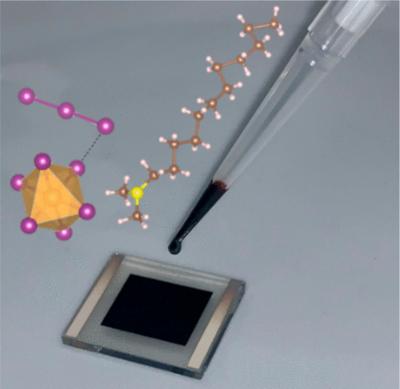Researchers at the Research Institute of Sweden (RISE) and KTH Royal Institute of Technology have presented the ionic liquid (IL) synthesis of two novel pseudo-2D perovskite-type gold(III)polyiodide compounds and their use as active layers in monolithic solar cells.
The team stated that its recent work represents the first demonstration of film deposition of gold iodide/polyiodide compounds onto porous monolithic substrates with subsequent solar cell characterization. The devices reportedly showed promising photovoltaic performance and could unlock new materials design possibilities, ultimately moving away from lead-based photovoltaic materials. These findings further highlight the use of simple polyiodide entities to increase the structural and electronic dimensionality of gold perovskite-type anions.
The researchers explained that their aim is to build solar cells based on non-toxic gold, which opens up other application areas, such as consumer electronics, flexible electronics and indoor applications, where the price is not always the most critical factor. Also, these types of applications don't always require super high efficiencies.
The research group proposed to use, in particular, two pseudo-2D gold polyiodide compounds known as [DodMe2S][AuI4][I3] and [Et3S][AuI4][I5], which yielded optical bandgaps of 1.40 and 1.25 eV, respectively.
The team used polyiodide ionic liquids (PIL) as a precursor solution for the deposition of the compounds as thin films. They said high vacuum and high temperatures should be avoided when assembling solar-cell devices involving the above-mentioned compounds.
They built lead-free solar cells based on the two compounds as the absorber layers using a device structure consisting of a tin oxide (FTO) substrate, titanium oxide (TiO2) films, a zirconium dioxide (ZrO2) interlayer, a nickel(II) oxide hole transporting layer and a carbon electrode.
Tested under standard illumination conditions, the champion solar cell developed by the scientists achieved a power conversion efficiency of 0.052%. The team, based on reference measurements, explained that there is great potential for improvement.




